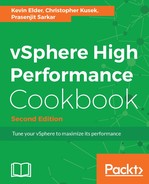The virtual CPU consists of the virtual instruction set and the virtual memory management unit (MMU). An instruction set is a list of instructions that a CPU executes. MMU is the hardware that maintains the mapping between the virtual addresses and physical addresses in the memory.
The combination of techniques used to virtualize the instruction set and memory determines the monitor execution mode (also called the monitor mode). The VMM identifies the VMware ESXi hardware platform and its available CPU features and then chooses a monitor mode for a particular guest operating system on that hardware platform. It might choose a monitor mode that uses hardware virtualization techniques, software virtualization techniques, or a combination of hardware and software techniques.
We have always had a challenge in hardware virtualization. x86 operating systems are designed to run directly on bare metal hardware, so they assume that they have full control over the computer hardware. The x86 architecture offers four levels of privileges to operating systems and applications to manage access to the computer hardware: ring 0, ring 1, ring 2, and ring 3. User-level applications typically run in ring 3; the operating system needs to have direct access to the memory and hardware and must execute its privileged instructions in ring 0.
Binary translation allows the VMM to run in ring 0 for isolation and performance while moving the guest operating system to ring 1. Ring 1 is a higher privilege level than ring 3 and a lower privilege level than ring 0.
VMware can virtualize any x86 operating system using a combination of binary translation and direct execution techniques. With binary translation, the VMM dynamically translates all guest operating system instructions and caches the results for future use. The translator in the VMM does not perform a mapping from one architecture to another; that would be emulation, not translation. Instead, it translates from the full unrestricted x86 instruction set issued by the guest operating system to a subset that is safe to execute inside the VMM. In particular, the binary translator replaces privileged instructions with sequences of instructions that perform the privileged operations in the VM rather than on the physical machine. This translation enforces encapsulation of the VM while preserving the x86 semantics as seen from the perspective of the VM.
Meanwhile, user-level code is directly executed on the processor for high-performance virtualization. Each VMM provides each VM with all of the services of the physical system, including a virtual BIOS, virtual devices, and virtualized memory management.
In addition to software virtualization, there is support for hardware virtualization. This allows some of the work of running virtual CPU instructions to be offloaded onto the physical hardware. Intel has the Intel Virtualization Technology (Intel VT-x) feature. AMD has the AMD Virtualization (AMD-V) feature. Intel VT-x and AMD-V are similar in aim but different in detail. Both designs aim to simplify virtualization techniques.
